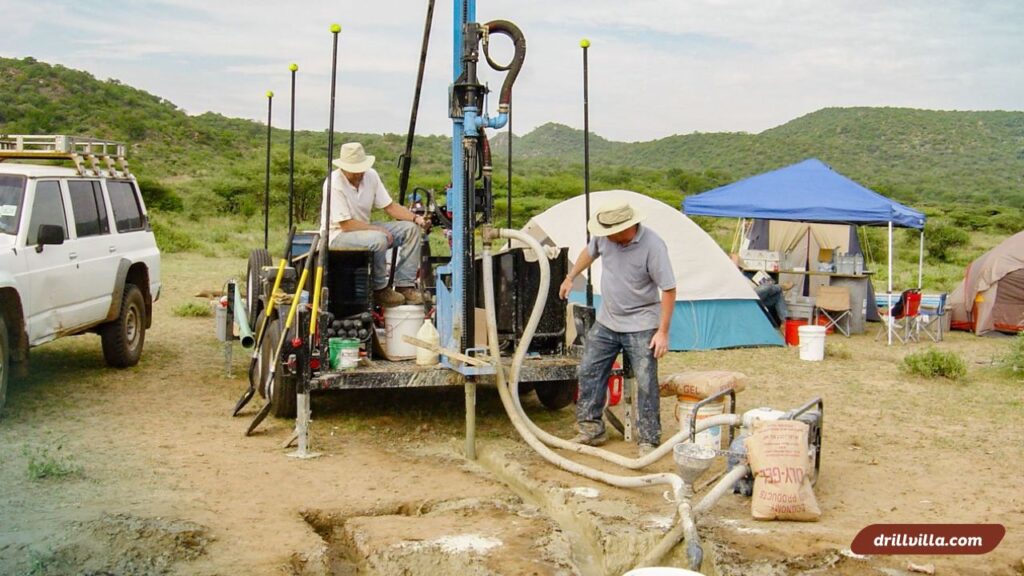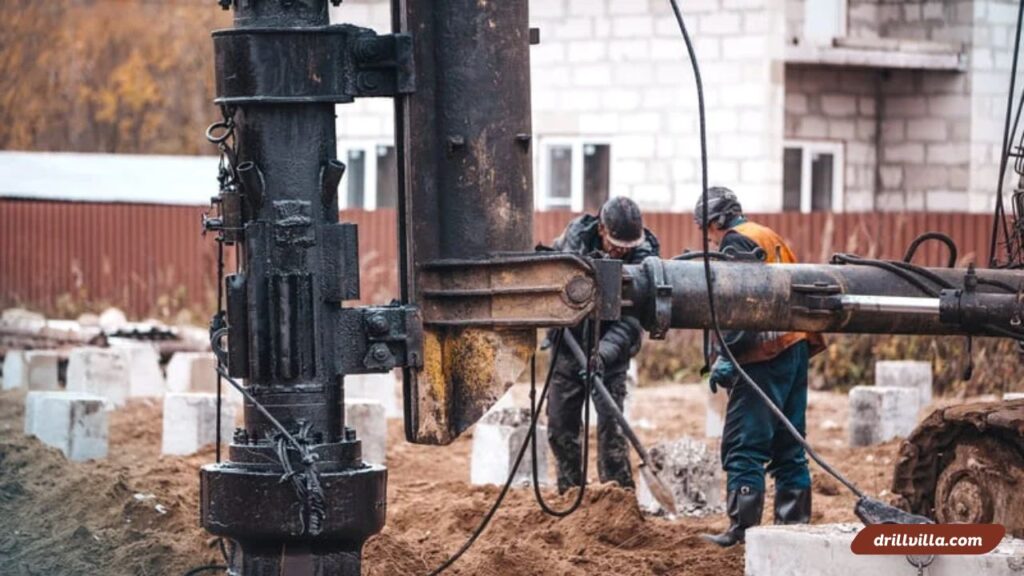I’ll never forget the morning I turned on the faucet, and nothing but a sputter came out. At first, I thought it was a fluke—maybe the pressure tank or a small issue. But no, my decades-old well had finally given up. That kicked off a journey I hadn’t expected—asking myself, “Will Welldrillers Drill In Old Well Holes?”
Turns out, it’s not a simple yes or no. It depends on quite a few things—some technical, some regulatory, and some just plain practical. I dove deep into the research, talked to well drillers, and lived through the process myself. So if you’re in the same boat, I’ve got you covered.

Article Summary
- What Does It Mean to Drill in an Old Well Hole?
- Why I Considered Drilling in My Old Well
- What Well Drillers Told Me
- Factors That Determine If You Can Drill in an Old Well
- Real-Life Example: My Old Well’s Fate
- When Drilling a New Well Makes More Sense
- Signs You Shouldn’t Reuse an Old Well
- Alternatives to Drilling a New Hole
- Legal & Permit Considerations
- Common Questions I Had (And Got Answered)
- My Final Thoughts
- Key Takeaways
- Table: Pros and Cons of Reusing an Old Well Hole
- FAQs On Will Welldrillers Drill In Old Well Holes
- Final Tip: What I’d Do Differently
What Does It Mean to Drill in an Old Well Hole?
Let’s start with the basics. When people ask if a driller will use an old well hole, they usually mean one of these things:
- Re-drilling deeper into the same borehole
- Rehabilitating or cleaning the old well
- Abandoning the old casing and starting again nearby
- Reusing the old well casing for a new pump system
Each of these options has pros and cons. The key is understanding whether your old well can be reused safely and legally.
Yes, well drillers can drill in old well holes—but only if:
- The casing isn’t damaged
- The location meets current safety codes
- There’s still a reliable water table or aquifer
- State/local laws allow re-drilling or rehabilitation
- It’s economically worth it
In many cases, though, drillers will prefer to start fresh.
Why I Considered Drilling in My Old Well
I live on a rural property, and the old well had served me well (pun intended) for over 25 years. When it dried up, my first thought was, “Let’s just go deeper in the same hole.”
Here’s why I wanted to reuse the old hole:
- It was already there—no need to tear up more of my land
- Cost savings—or so I thought
- Less permitting hassle (in theory)
- Sentimental value—this well was part of the home’s story
But boy, did I learn there’s a lot more to it.
What Well Drillers Told Me
I talked to four local well drillers, and their answers were eye-opening. Here’s what they said when I asked, “Will you drill in my old well hole?”
When They Said Yes:
- The casing was in great shape
- The hole had been properly sealed or maintained
- Regulations didn’t prohibit it
- It was technically feasible (no collapsed areas, etc.)
When They Said No:
- The casing was too old or corroded
- The original well wasn’t properly grouted
- There was risk of contaminated water seepage
- State law required new well registration anyway
Factors That Determine If You Can Drill in an Old Well
Here’s a breakdown of what well drillers consider before touching your old well hole:
| Factor | Description |
|---|---|
| Casing Condition | Is the metal or PVC still solid, or corroded and collapsing? |
| Depth of Original Hole | Will drilling deeper reach a better aquifer or just more dry rock? |
| Contamination Risk | Any past signs of bacteria, nitrates, or surface water intrusion? |
| Access for Equipment | Can modern drilling rigs fit over the original site? |
| Local Regulations | Some states require all new wells to be fresh bores with permits |
| Water Table Movement | Is the water table now deeper or shifted? |
| Cost vs. Benefit | Will reusing save money or create future maintenance nightmares? |
Real-Life Example: My Old Well’s Fate
In my case, the driller did a downhole camera inspection. What we saw was…ugly. The casing was rusted and jagged in places, and sediment had built up so badly that re-drilling wasn’t safe.
So even though I hoped to reuse the hole, we had to drill a brand-new well 40 feet away. It cost more, but the water was cleaner, and the pressure was better.
When Drilling a New Well Makes More Sense
Sometimes, the best move is to start fresh. Here’s why:
- Higher chance of reaching a better aquifer
- Avoids contamination issues
- Modern drilling tech is bigger—needs better access
- Old wells often weren’t sealed properly
- Easier to get permits for new construction
It’s like trying to renovate a 1920s house with asbestos and knob-and-tube wiring—it might work, but it’s often safer and smarter to rebuild.
Signs You Shouldn’t Reuse an Old Well
Be careful if you notice any of these red flags:
- Brown or rusty water
- Low or no pressure
- Well pump overheating
- Water tests fail for bacteria or nitrates
- You can hear gurgling or hissing sounds
These are signs your old well isn’t just old—it might be unsafe.

Alternatives to Drilling a New Hole
If drilling a new well isn’t in your budget, consider these:
Well Rehabilitation
This involves cleaning, chlorinating, and sometimes jetting or brushing the inside of the casing.
Hydrofracturing
Also called “hydrofracking,” this expands existing fractures in the rock to improve water flow. It’s cheaper than redrilling but doesn’t always work.
Re-casing and Sealing
If the casing is partially damaged, some drillers can re-sleeve the well with new pipe.
Legal & Permit Considerations
Before you even call the driller, check with your:
- County health department
- State water resource board
- Local building code office
Some regions have strict rules about:
- Abandoning old wells (must be sealed professionally)
- Reusing old casings
- Minimum distances from septic systems, property lines, etc.
Common Questions I Had (And Got Answered)
1. Can a well be drilled deeper into the same hole?
Yes, if the casing and borehole are stable. But risks like collapse or contamination go up.
2. Is it cheaper to reuse an old well hole?
Sometimes—but not if repairs, inspections, or treatments are needed. I found the cost difference wasn’t always worth it.
3. How do I know if my well is too old?
If it’s over 25-30 years old and hasn’t been maintained, there’s a good chance it’s not reusable.
4. Can I drill near my old well?
Yes, as long as you meet spacing and setback requirements (usually 50–100 feet away).
5. What happens to the old well if I drill a new one?
It must be properly abandoned—plugged with grout or concrete by a licensed driller. This prevents contamination of the groundwater.
My Final Thoughts
Would I recommend trying to reuse an old well? Only if a qualified well driller inspects it and gives you the green light. I wanted it to work out—it would’ve saved time and money—but I’m glad I followed expert advice.
Drilling in an old well hole isn’t impossible, but it’s like reviving a classic car. Sometimes it’s better to start from scratch and build something safer, cleaner, and more reliable.
Key Takeaways
- Well drillers might reuse an old well hole, but only under the right conditions
- Safety, legality, and water quality come first
- Always get a professional inspection and water test
- Don’t assume it’s cheaper—it often isn’t in the long run
- If your well is over 30 years old, chances of reuse go way down
Table: Pros and Cons of Reusing an Old Well Hole
| Pros | Cons |
|---|---|
| May save money (in some cases) | Higher risk of contamination |
| Less disturbance to property | Might not meet modern regulations |
| Faster than drilling a new one | Old casing can collapse during re-drilling |
| Familiar location for utilities | May not hit deeper or better aquifers |
FAQs On Will Welldrillers Drill In Old Well Holes
Can I drill a new well in the same spot?
Usually no, unless the old well is properly sealed and abandoned first.
How far from the old well should the new one be?
Depends on local codes—often 50–100 feet is required.
Do all states allow reuse of old well holes?
No. Some states like California and Michigan have strict rules against it.
Is hydrofracturing a good option?
Sometimes—it can help improve flow in low-yield wells, but success varies.
Should I test water from an old well before reusing it?
Absolutely. Test for bacteria, nitrates, metals, and pH at a minimum.
Final Tip: What I’d Do Differently
Looking back, I wish I’d had my well inspected every 5 years instead of just assuming it’d last forever. If you still have a working well, treat it like a car—maintain it, test it, and have a driller check it out before it fails.
Because once you’re left with dry taps, the road to recovery is a lot more complicated than you think.